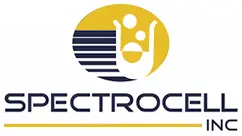How to Optimize Images
Time to Read: 2m 30s
[caption id="attachment_2938" align="aligncenter" width="292"] Is your site hungry for traffic? Feed it with eye-catching, relevant images.[/caption] Adding images to a webpage or blog is an important way to attract users to your site. While there is a whole lot of truth behind the "a picture is worth 1,000 words" cliche, there is a more compelling reason to add quality images to your site. People are simply more likely to click on things when they see an image. Not convinced? Take a look at Twitter. Ever since Twitter began expanding tweets so that you can see images without having to click on a link, Twitter users have reported a significant increase in engagement. Additionally, images can have a positive impact on your SEO. Search engines cannot see images, but if you optimize the image correctly, it can give your page a bump up in search rankings.
Is your site hungry for traffic? Feed it with eye-catching, relevant images.[/caption] Adding images to a webpage or blog is an important way to attract users to your site. While there is a whole lot of truth behind the "a picture is worth 1,000 words" cliche, there is a more compelling reason to add quality images to your site. People are simply more likely to click on things when they see an image. Not convinced? Take a look at Twitter. Ever since Twitter began expanding tweets so that you can see images without having to click on a link, Twitter users have reported a significant increase in engagement. Additionally, images can have a positive impact on your SEO. Search engines cannot see images, but if you optimize the image correctly, it can give your page a bump up in search rankings.
 Is your site hungry for traffic? Feed it with eye-catching, relevant images.[/caption] Adding images to a webpage or blog is an important way to attract users to your site. While there is a whole lot of truth behind the "a picture is worth 1,000 words" cliche, there is a more compelling reason to add quality images to your site. People are simply more likely to click on things when they see an image. Not convinced? Take a look at Twitter. Ever since Twitter began expanding tweets so that you can see images without having to click on a link, Twitter users have reported a significant increase in engagement. Additionally, images can have a positive impact on your SEO. Search engines cannot see images, but if you optimize the image correctly, it can give your page a bump up in search rankings.
Is your site hungry for traffic? Feed it with eye-catching, relevant images.[/caption] Adding images to a webpage or blog is an important way to attract users to your site. While there is a whole lot of truth behind the "a picture is worth 1,000 words" cliche, there is a more compelling reason to add quality images to your site. People are simply more likely to click on things when they see an image. Not convinced? Take a look at Twitter. Ever since Twitter began expanding tweets so that you can see images without having to click on a link, Twitter users have reported a significant increase in engagement. Additionally, images can have a positive impact on your SEO. Search engines cannot see images, but if you optimize the image correctly, it can give your page a bump up in search rankings.
How to Optimize Images
It's not enough just to upload an image to your website or blog. If you want the image to boost your page, there are several steps you need to take to optimize the image:- Name the image correctly: When you save an image, the default file name is usually a series of numbers, like this: 361803055_ef046d3f13. That doesn't make sense to anyone, not to your users and not to Google's spiders. If your page is about industrial water softeners and the image is of an industrial water softener, spend three seconds renaming the image "industrial_water_softener." Google and other search engines will see these words in the file name, and index the image accordingly. Essentially, this lets you add a keyword to your page without engaging in the counterproductive practice of keyword stuffing.
- Don't leave the alt tag blank: Alt tags help put images in context. If you repeat the image name in the alt tag, that's not great, but it's better than leaving it blank. However, by adding a little more detail, you can improve the image's optimization. For example, if the image name is industrial_water_softener, the alt tag might be "Our top-of-the-line industrial water softener."
- Make sure it's the right size: If your image is too big and takes too long to load, users will be more likely to lose patience and leave your page. Conversely, if the image is too small, it may not have a negative impact, but it may not provide much of a benefit, either. After all, what good is an image if it's too small to show you the level of detail you are expecting to see?
- Quality: Nobody wants to see grainy or stretched images. Choose wisely.




